Because this 7th edition unfolded in the stories shared in the room, across the 12 or 13 tables, by the 30-odd participants. We are talking real stories of course. Celebrating 10 years of CSR will mean nothing if not for the stories. Right from how CSR became mandated for companies in the private sector, to how women-led micro enterprises are today proving to be case studies of solid entrepreneurship at the grassroots, these 10 years of CSR are the sum total of thousands of stories. They also tell us that there is no turning back now, because everywhere we turn, corporates and NGOs and governments and social entrepreneurs and innovators are talking about scaling up, about replicability, and about sustainable programmes. And yes, about partnerships.
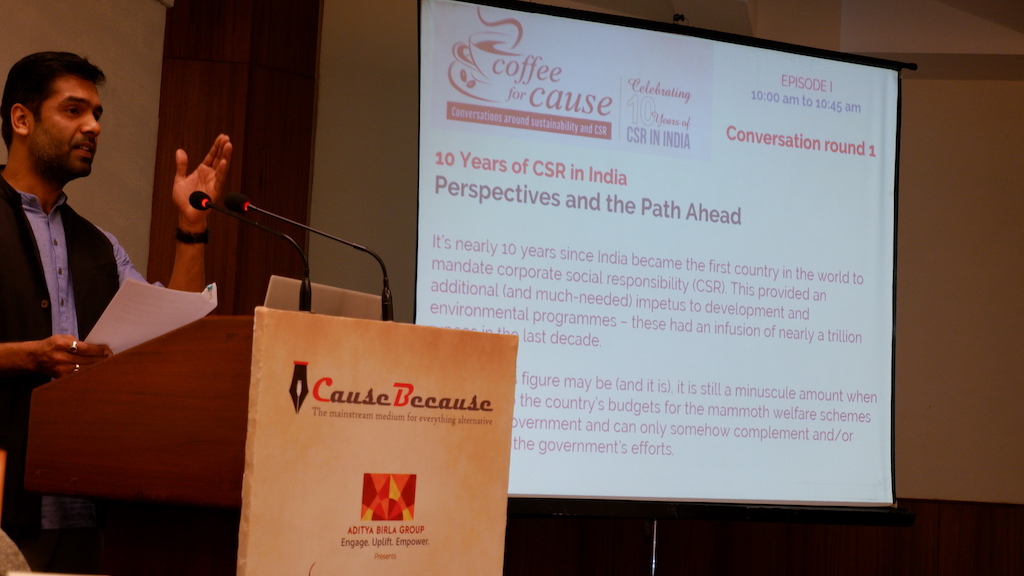 Which brings us to the last lines said (by Ranjan Rayna, chief strategist at CauseBecause), at this edition of Coffee for Cause: “Corporates are today talking about corporate-corporate partnerships. They realise it’s more than about where their respective logos will be placed or what brand value they will likely get – more than the marketing value (if it comes to that), it is about the value created at the grassroots. So, can these nine CSR heads sitting around this one table talk about creating this one programme? For the sake of great outcomes and a larger impact?â€
Which brings us to the last lines said (by Ranjan Rayna, chief strategist at CauseBecause), at this edition of Coffee for Cause: “Corporates are today talking about corporate-corporate partnerships. They realise it’s more than about where their respective logos will be placed or what brand value they will likely get – more than the marketing value (if it comes to that), it is about the value created at the grassroots. So, can these nine CSR heads sitting around this one table talk about creating this one programme? For the sake of great outcomes and a larger impact?â€
Because at the heart of CSR is impact. With this as context, has the law (Section 135 of the Companies Act, 2013) been able to achieve what it set out to achieve? Has it made an impact? Has it led us to conceptualise and implement programmes and solutions that solved (are solving) at least some of the major problems at the grassroots?
It’s nearly 10 years since India became the first country in the world to mandate corporate social responsibility (CSR). This provided an additional (and much-needed) impetus to the development and environmental programmes – these had an infusion of nearly a trillion rupees in the last decade. Yet, as big as this figure may be (and it is), it is still a minuscule amount when compared to the country’s budgets for the mammoth welfare schemes run by the government and can only somehow complement and/or supplement the government’s efforts.
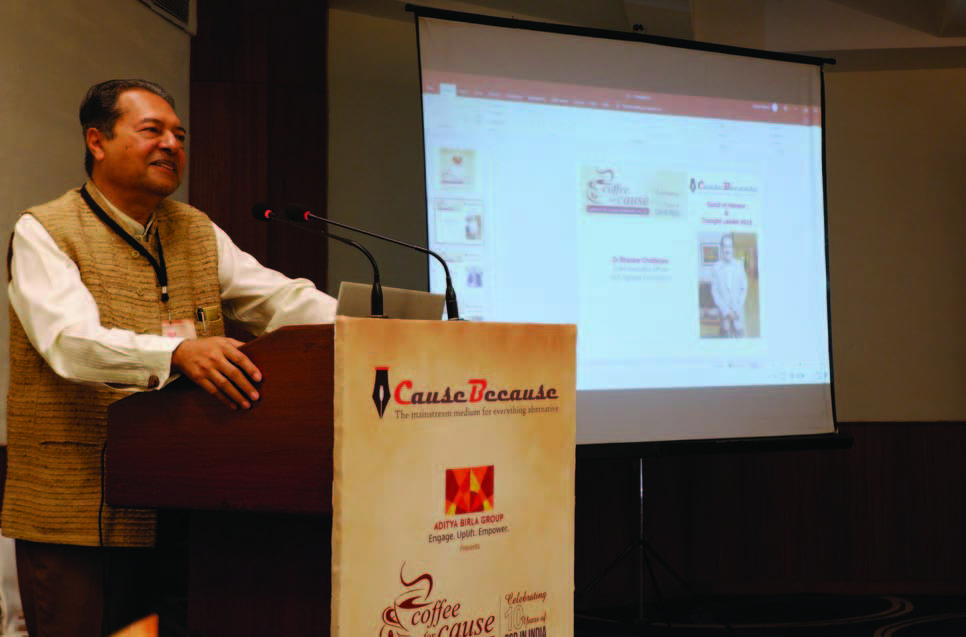 Dr Bhaskar Chatterjee, former director general & CEO, Indian Institute of Corporate Affairs (IICA), and currently CEO at Anil Agarwal Foundation, gives us a sense of things: “What CSR is, is less than a minuscule of what the government actually spends. The buck still stops with the government. Upliftment of the poor is the government’s real responsibility. As corporates, can we complement or supplement this responsibility? Certainly yes. To be able to be a part of the country’s development agenda is what makes CSR so exciting and full of possibilities.â€
Dr Bhaskar Chatterjee, former director general & CEO, Indian Institute of Corporate Affairs (IICA), and currently CEO at Anil Agarwal Foundation, gives us a sense of things: “What CSR is, is less than a minuscule of what the government actually spends. The buck still stops with the government. Upliftment of the poor is the government’s real responsibility. As corporates, can we complement or supplement this responsibility? Certainly yes. To be able to be a part of the country’s development agenda is what makes CSR so exciting and full of possibilities.â€
Widely acknowledged as chief architect of the CSR law, Dr Chatterjee says: “I feel proud that I could actually seed something in government policy that has led to an ecosystem that demonstrably contributes to India’s development agenda. CSR is an industry today, a sector by itself. The number of people – and minds – that are engaged in CSR is incredible.â€
It is befitting then that Dr Chatterjee, felicitated as CauseBecause Thought Leader at this edition, is taking centre stage at an event that is celebrating 10 years of CSR in India. After all, he is the person who moved that “little file with no correspondence marked on it†from his table all those years ago, when he was with the ministry of heavy industries and public enterprises, and saw it through until it became Section 135 of the Companies Act, spelling out and mandating corporate social responsibility.
His stories are a vivid retelling of the journey of CSR as we know it today, here in India. It’s a journey that’s way more interesting than you or I can imagine, not the least because it tells us how certain egotistic and opinionated top leadership in companies had to be brought around, smug in their belief that they were “already doing CSR everydayâ€.
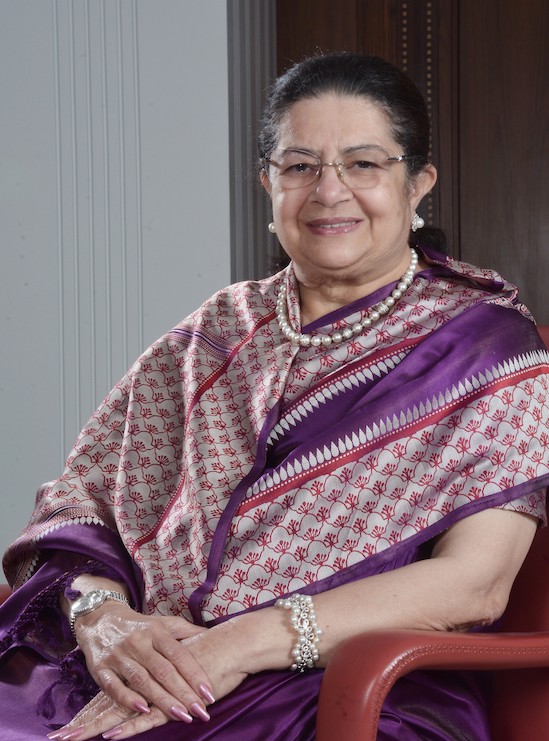
Rajashree Birla
Chairperson, Aditya Birla Centre for Community Initiatives and Rural Development
At the outset, the first thought that comes to mind is the need to embrace disruptive thinking, plan ahead, and pivot the power of networking. Surely everyone affirms that collaborative experience wherein most of us work hand-in-hand with the government, the community influentials and NGOs, moving the needle on CSR to a new level, is an absolutely worthwhile effort. People have a heart, a brain and a soul. The conversations at Coffee for Cause, over the last decade, touched the soul. And this is in continuum. We at Aditya Birla Group have been associated with Coffee for Cause since its inception, largely because of synergies in the developmental sector.
Resilience and reaching out, harnessing the energy and the collaborative spirit, are traits that CauseBecause, through Coffee for Cause, helps bolster. That said, we need to take the spirit of bonding to the next level, and create an environment that is equitable and all-inclusive. The government is doing its utmost, but it will still be a while before we get there.
As a nation, we are in a sweet spot. For India, this is indeed a definitive time. We realise fully well that we stand on the cusp of the country’s leap, economically and socially. The G-20 presidency presents a great platform to showcase our progress on every front. Already there is a lot of international acclaim for our strides. The spectre of poverty no longer haunts our country. A World Bank policy paper mentions that only 10 per cent of our people live in extreme poverty. Regardless of the COVID-19 pandemic, the Indian economy is on a surge. India has been reimagined and, in a manner of speaking, reinvented. An amazing confluence of forces, inclusive of technological dives, and shifts on the geopolitical arena, is working to our advantage.
And yet in the midst of progress and affluence, in the midst of high-level education, in the midst of the meritocracy trumpet, we still live with millions in the poverty zone.
I am sure all of you relate with this thought. The world that we want is a world free of suffering. A world where people are happy, where there is no poverty, where every human being has a roof above his head, and the means to eke out a sustainable livelihood and live a life of dignity. This is the base on which Coffee for Cause’s ‘conversations’ are fixated.
A little aside. It is critical that concerns beyond the developmental stage be part of the conversations that will spur us into being sensitive to the earth. Climate change, carbon emissions, disrupting rainfall patterns, extreme weather conditions, depletion of water resources, the erosion of the ecosystems, and the risk to biodiversity, amongst other factors, pose real dangers to mankind. We need to take more affirmative action, backed with technology.
At Aditya Birla Group, the underlying motto in our CSR engagement has always been to engage, uplift and empower communities, and in doing so perpetually be a force for good and enrich lives. We are heavily invested in healthcare, education, sustainable livelihoods and infrastructure development.
Our vision is to actively contribute to the social and economic development of the communities in which we operate. In sync with the UN SDGs, our endeavour is to lift the burden of poverty weighing down the underserved and foster inclusive growth. In doing so, build a better, sustainable way of life for the weaker and marginalised sections of society.
We work in 7,000 villages, embracing nine million people pan-India and parts of the world. All of our projects are run under the aegis of Aditya Birla Centre for Community Initiatives and Rural Development, which I chair. It is anchored in the Group CSR function, led by Dr Pragnya Ram. The Centre is the apex body that provides the strategic direction and the thrust areas for our CSR engagement across the Group. It ensures performance management as well, and is supported by a 1,200-strong committed cohort for whom CSR is a calling.
At the end of the day, my constant refrain is to think beyond oneself. It is very important to realise that we are all truly a privileged lot. Hence, we must move beyond our comfort zone, and reach out. Let the inner light guide you to reach out. In the words of Mother Teresa, and I quote, “Let no one ever come to you without coming away better and happier.â€
Here’s to many more coffees for cause!
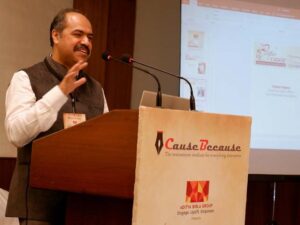 Among the Thought Leaders at this edition was Chetan Kapoor, CEO, Tech Mahindra Foundation, who mentioned how serendipity and a series of interesting coincidences led him to join Pratham at the beginning of his 20 years-plus career, after a stint with Apollo Tyres. As it happened, one of the corporates that had come forward to support Pratham at that point was Aditya Birla Group (ABG). Chetan recalled how his first paycheque actually came from ABG and today, receiving his Thought Leader memento, what does he see but the ABG logo as the presenter of Coffee for Cause. So a nice little full circle there!
Among the Thought Leaders at this edition was Chetan Kapoor, CEO, Tech Mahindra Foundation, who mentioned how serendipity and a series of interesting coincidences led him to join Pratham at the beginning of his 20 years-plus career, after a stint with Apollo Tyres. As it happened, one of the corporates that had come forward to support Pratham at that point was Aditya Birla Group (ABG). Chetan recalled how his first paycheque actually came from ABG and today, receiving his Thought Leader memento, what does he see but the ABG logo as the presenter of Coffee for Cause. So a nice little full circle there!
Since we are talking about coincidences, here’s another one, from Nikhil Pant, CEO, REACHA, and ex-chief programme executive, National Foundation for CSR IICA. Having spent much of his early working years with Dr Chatterjee and Chetan, he marvelled at getting to share the coffee table with both of them to talk about a subject, CSR, that he has been closely associated with since it became mandated.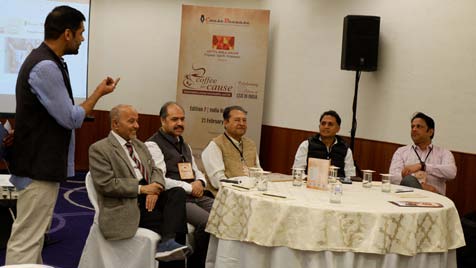
Nothing says it like stories do. Because in stories we find the sentiments and the moments that hold us all together, and proof that the ‘theory of change’ is somewhere finding meaningful, life-altering translations. Coffee for Cause unravels its real agenda and purpose in stories, the stories that participants share.
Remembering her moments with beneficiaries of a skill development programme who were subsequently employed, Pooja Trisal of Flipkart Foundation said it actually came down to enabling them to live with dignity. Dr Chatterjee recalled a sweltering day in Barmer, Rajasthan, where he and his officials joined forces with the village folk to search for a child who went missing from the anganwadi, forgetting the day’s official agenda and speeches that were lined up.
With anganwadis as context, one participant asked about the viability of conceptualising and implementing pilot programmes targeted at bringing about qualitative change, and then handing these over to the government for scaling up. Dr Chatterjee said the difficulty is that the government is responsible for hundreds of thousands of anganwadis and one department on its own might not have the money to oversee such scaling up. “But then, why not do a B2B collaboration among us corporates,†he asked of the gathering. “You have done your pilot in a particular geography, I in another – why not share our experiences and jointly manage five anganwadis? We pool in resources, we also save monies for each other.â€
A story that weaves together the impact of what an integrated social programme can do was shared by Dr Umang Mathur, executive director, Dr Shroff’s Charity Eye Hospital (SCEH). Apart from service delivery, a big part of what SCEH does is human resource creation. They train doctors, yes, but the larger programme is training young women to be eye-care paramedics.
Hospitals need a whole lot of allied professionals including technicians to support them. In the last five years, SCEH has trained close to 1,500 young women to be paramedics, across geographies (including Delhi, Vrindavan, Saharanpur, Shahjahanpur, Alwar and Meerut). The beneficiaries of the training programme are from among local communities. In fact, at least 80 per cent of the staff is local. As an organisation, SCEH is nearly 70 per cent women.
Watch glimpses of the conversations here:
The impact on the women is tremendous. So, at the hospital in Mohammadi Block in Lakhimpur Kheri – one of the largest districts in Uttar Pradesh and also one of the most backward – where average patients footfall per day is 500, a large number of women paramedics have found employment. Dr Mathur had a moving story to share: “One day, as I sat doing some work on my laptop, this young woman knocks at the door and walks in, with a somewhat sheepish expression. She had come with a request for a bus service that would help her commute from the next block. I suggested she take up residency in the dormitory at the hospital complex. She would then not have to worry about travel, and also get meals provided to her. She said that would not work for her because her father (a daily-wage labourer) and school-going brother had shifted in with her. It was a telling moment, because what she was earning was the only source of stable and regular income in the family.â€
Clearly, Dr Mathur meant it when he said: “Education can’t be just for the sake of education. It has to have a purpose of job creation, or somebody being able to do something creatively. Healthcare can do a lot in this sphere, because hospitals are more than the sum of doctors and nurses.â€
From January to December 2022, the 60 primary-care centres (vision centres) run by the trained technicians saw 1.6 lakh patients. (The flagship SCEH centre at Delhi’s Daryaganj saw some 1.75 lakh patients walking in.) Today, about 25%”30% of all surgeries at SCEH are referred to by the vision centres.
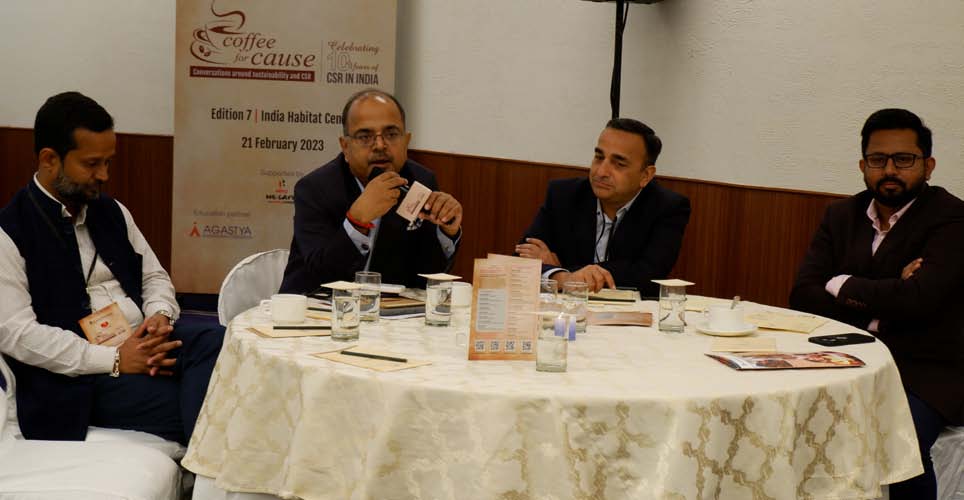 Noting that education and skilling are the most effective ways to break the vicious cycle of poverty, Anurag Pratap, vice president and head – CSR, Capgemini, said that solving the root causes remained key. For example, why a girl child is not being sent to school. It can be for something as basic as needing someone at home to fill water. If not that, to run errands, or to look after younger siblings. Or to help the parent(s) in their daily-wage work. So then, perhaps solving the water issue is a solution, or one of the solutions.
Noting that education and skilling are the most effective ways to break the vicious cycle of poverty, Anurag Pratap, vice president and head – CSR, Capgemini, said that solving the root causes remained key. For example, why a girl child is not being sent to school. It can be for something as basic as needing someone at home to fill water. If not that, to run errands, or to look after younger siblings. Or to help the parent(s) in their daily-wage work. So then, perhaps solving the water issue is a solution, or one of the solutions.
Things are changing though, however slowly. How do we know things are changing? For one, 1o years back everyone was talking about primary education. Today, here at this place, we are sharing stories of higher education. Access to technology has increased in the post-Covid world. Alongside, companies are using technology more and more to expand their business. Technology access and intervention can be aided in a big way via CSR.
Education is one of the largest recipients of CSR spending. Imagine what all can be done with that kind of support, resource pooling and funding. For one, raise a roomful
of children eager to create, invent, paint, heal, lead, mentor, protect, preserve, nurture. Skills and qualities that humanity and this planet need more urgently today than ever.
About sustainable programmes, sustainability, and suchlike
“Empower the communities around your business operations. If you are not working with these communities, you cannot sustain your business,†said Vivek Prakash, VP and head – CSR at Jubilant Ingrevia. So, during Covid a women’s self-help group in Gujarat started collecting neem leaves, which they pulverised, and supplied the powder to Jubilant, which in turn started manufacturing a product based on neem powder and used the same for animal nutrition. As of today, nearly 2,000 women are engaged in this enterprise. This is a shining example of a community supporting business.
Moral of the story: Integrate CSR with your business, so that the beneficiaries are somehow connected to the business and the livelihoods become sustainable.
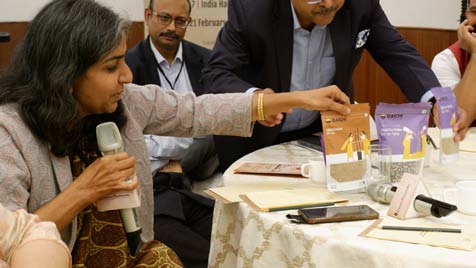 Anupam Nidhi, head of CSR at Hindustan Zinc, said sustaining micro enterprises and livelihoods could not be done without creating strong institutions. The beneficiaries have to own that institution, so that they do not stay dependent on another CSR fund or NGO fund to be able to carry on.
Anupam Nidhi, head of CSR at Hindustan Zinc, said sustaining micro enterprises and livelihoods could not be done without creating strong institutions. The beneficiaries have to own that institution, so that they do not stay dependent on another CSR fund or NGO fund to be able to carry on.
Communities taking ownership is the very thing that will also make sustainability-focused programmes sustainable.
There’s the story of Conserve India, an organisation that works in the waste management space, primarily plastic and textile waste. They had started with a composting project in some colonies in Delhi, as part of the Delhi government’s Bhagidari project, but it did not turn out to be sustainable due to a couple of reasons including lack of community support. In the meantime, though, Conserve was deeply involved with the waste workers, who needed education, skill development and livelihoods. So, Conserve started experimenting with plastic waste, in particular plastic bags, which were easily available. They developed a technique to upcycle these plastic bags, which were of all colours, layering these together and creating fabric in the process. In the next stage, artisans made products out of these. In those days, such products had few takers in the Indian market, but found a ready market abroad. So Conserve started exporting these and soon became a Fairtrade entity. Exporting earned the organisation enough for them to continue with their programmes focused on capacity building.
Along the way, Conserve also created a model called micro factories. Here’s the model: 5 to 6 entrepreneurs put together their respective machines into one room and solve the entire plastic problem of a community. Instead of trying to find markets for the products, make these for the community itself. This way, the whole community gets involved and becomes more aware of environment and sustainability aspects.
The market being ready, people being aware and doing more than giving lip service to sustainability… is something that Rohit Sharma – whose company, Purp, repurposes the hoardings put up by companies everywhere, turning the flex in these into laptop sleeves, lunch bags, tote bags, and what have you – also highlighted. Buying sustainable products such as these is not yet a popular thing, despite the fact that these are durable, cleanable, capable of weathering the elements, and really good-looking. 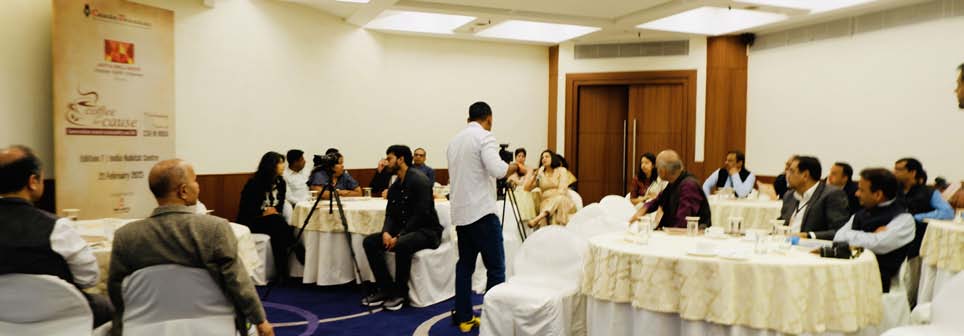
There is also the story about a women-led textile micro enterprise in Rajasthan, shared by Hindustan Zinc’s Anupam, where they do not waste any bit of the cloth they procure from the market. It becomes a garment, a pouch, a piece of jewellery, and so on, but nothing gets wasted. And doing this is very much their own initiative. Because conserving of resources is something they just do. Something to think about and remember and design our social programmes around, right?
For now, let’s circle back to this edition’s concluding lines mentioned at the beginning of this write-up, talking about partnerships, one programme, and multiplier impact. We will do that with Anurag’s words: “In the last 10 years we have created a number of dots – impacting programmes that are like ‘islands of excellence’. The next 10 years should be about connecting these dots, so that the impact can become manifold. Also, everyone cannot do everything. So let’s join hands and bring in our respective talents and expertise.â€
Takeaways from Edition 7
- NGOs can facilitate B2B collaboration for larger scaling-up.
- Collaboration will also reduce the chances of ad hoc or random allocation of resources among the same set of beneficiaries.
- Complementing the government’s schemes not just ensures scalability, stability and sustainability for a programme, but also goes a long way towards overcoming any hesitation that local implementing bodies may have about a third-party intervention.
- Integrate CSR with your business, so that the beneficiaries are somehow connected to the business and the livelihoods become sustainable.
- When you empower people from disadvantaged backgrounds, you are actually enabling a dignified existence for them.
- Ultimately it’s community ownership that will make any change, any programme sustainable – here, too, NGOs can play the lead role in bringing in the community’s voice and participation.
- Integrated reporting covering CSR, sustainability and ESG – and not to forget, stories from among the communities – is the way forward.
- Nobody is talking about Scope 3. Can corporates start making this a priority?
- Affordable clean-energy access is an area that has the potential to make a huge difference if embedded strategically – think solar-powered pumps for a drinking water programme, solar power for drip irrigation systems, and at schools not just to power lights and fans but also to run the audiovisual equipment, water-filtration system, etc.
- The last 10 years tell us what CSR can really achieve over the next 10 years
Thought Leaders felicitated at Edition 7
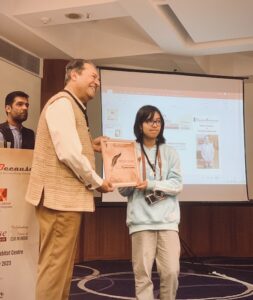
Dr Bhaskar Chatterjee
Former director general & CEO, Indian Institute of Corporate Affairs
Currently CEO at Anil Agarwal Foundation
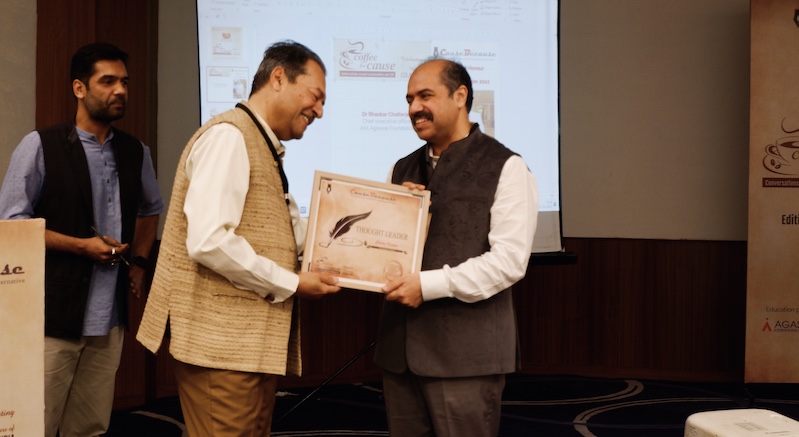
Chetan Kapoor CEO Tech Mahindra Foundation
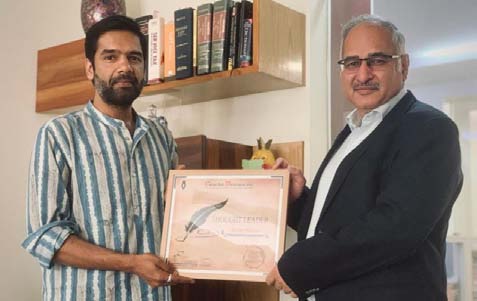
Sanjay Khajuria
Director – corporate affairs & sustainability
Nestlé India
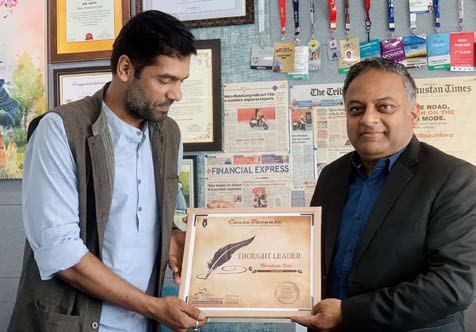
Bharatendu Kabi
Head – communications & CSR
Hero MotoCorp
- Dr Bhaskar Chatterjee, former director general & CEO, Indian Institute of Corporate Affairs (IICA), and currently CEO at Anil Agarwal Foundation
- Chetan Kapoor, CEO, Tech Mahindra Foundation
- Rajesh Mukhija, senior advisor – CSR, Hero MotoCorp
- Anupam Nidhi, head – CSR, Hindustan Zinc
- Anurag Pratap, vice president and head – CSR, Capgemini
- Nikhil Pant, CEO, REACHA, and ex-chief programme executive, National Foundation for CSR IICA
- Vivek Prakash, VP and head – CSR at Jubilant Ingrevia
- Dr Umang Mathur, executive director, Dr Shroff’s Charity Eye Hospital (SCEH)
- Saharsh David, head – CSR & Sustainability, Ericsson India
- Pooja Trisal of Flipkart Foundation
- Tushar Sud, director, partnerships and resource mobilisation, Swades Foundation
- Neeta Harmalkar, head of education programmes, Swades Foundation
- Praveen Karn, VP & head – CSR, Spark Minda Group
- Brajesh Gupta, head – CSR, Delhi International Airport
- Sumit Chauhan, vice president, CSR, RBL Bank
- Abhishek Kumar, lead, CSR, LG India
- Ravi Agarwal, head – CSR, FAME (CSR arm of AYE Finance)
- Parul Priya Aggarwal, deputy director, Concern India Foundation
- KK Upadhyay, chairperson, Centre for Sustainability & CSR, BIMTECH
- Lalitendra Bhartiya, senior project manager, Shiksha Initiative, Shiv Nadar Foundation
- Adwait Joshi, senior energy advisor, Institute for Sustainable Communities
- Kanika Ahuja, CEO, Conserve India
- Anita Ahuja, founder & creative director, Conserve India
- Ravi Pahuja, CEO, Raman Kant Munjal Foundation
- Gurbirender Singh, director, development & alumni relations, BML Munjal University
- Shantanu Das Gupta, head – community operations & strategic planning, SCEH
- Rohit Sharma, founder, Purp
- Adwait Joshi, sr energy advisor Institute for Sustainable Communities
- Ranjan Rayna, co-founder & chief strategist, CauseBecause
- Padma Pegu, co-founder & editor, CauseBecause
For partnership queries, write to info@causebecause.com

